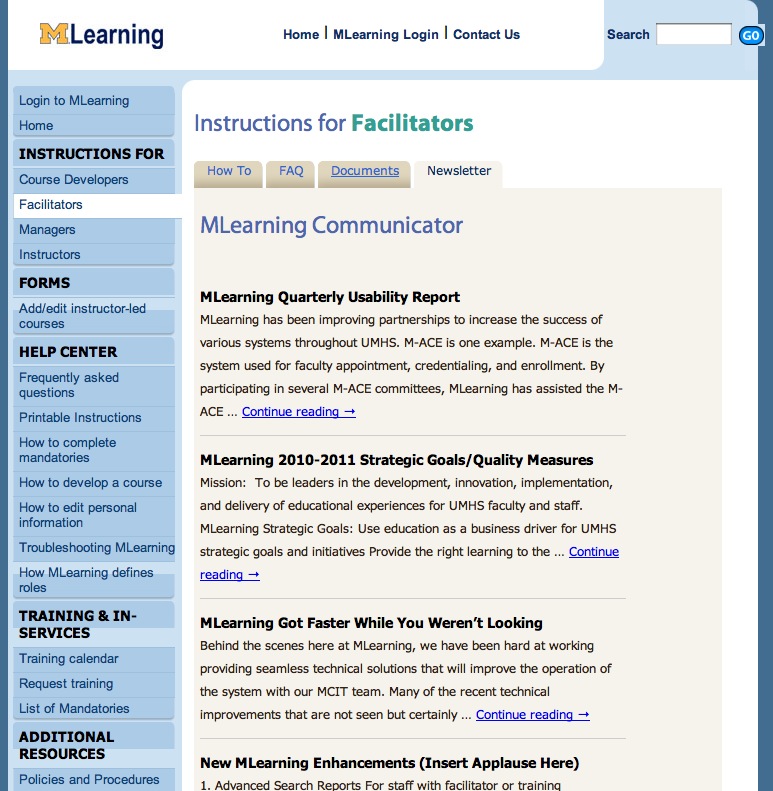Firefox not displaying XML file as a tree
I usually troubleshoot XML files by simply dragging them into a Firefox browser window. Unlike other text files, Firefox displays XML in a handy tree format, as show below.
Continue readingSolving technology problems, one at a time
I usually troubleshoot XML files by simply dragging them into a Firefox browser window. Unlike other text files, Firefox displays XML in a handy tree format, as show below.
Continue readingI find the new debugging tools in Safari almost as useful as Firebug. There’s a Web Inspector that lets you see exactly how the HTML is formed, a Javascript console that lets you see errors and debugging messages written into the code and much more.
But to use them you must enable the Debug menu in Safari. Open Safari preferences in the Safari Menu, click Advanced, and select Show Develop menu in menu bar.
Continue readingWhen XML data is sent back from a web service, it is in the form of a stream: there are no line breaks or indents to make it easier for humans to read. The example below is typical: the entire XML result is one continuous line. This makes it very hard to troubleshoot your application: you need a utility to put the indents and line-breaks back in.
Continue readingWhen working on an application that consumes data from a webservices XML response, you may find it useful to test your X-path expressions.
Continue readingA very useful displays an RSS feed as a list of article excerpts within a webpage.
The screenshot below shows the way the original script displays the RSS feed. A list of article excerpts is displayed in the center column of a portal site..

When running Java or other types of applications which use an XML file as part of the input, you may see this error: The Processing Instruction Target Matching “[xX][mM][lL]” is Not Allowed.
Often the cause is a malformed XML file, with a common problem being a blank line accidentally inserted before the required first line of the xml:
[ A blank line here will cause the error ] <?xml version-"1.0"?>Continue reading
The JW Player is a very popular open-source media player which not only supports many video, audio and image formats, but has many scriptable behaviors. Here we’ll make use of the JavaScript API to generate as many players as you want on a page. The generated players all have separate event listeners to keep them from interfering with each other. Events or actions executed in one player do not affect others.
Article Outline
This is a new version of that was compatible with an earlier version of the JW Player. This one has been updated to work with JW Player 4.7.761 and later.
This is an example of how to create a javascript-based Playlist selector for a JW FLV player. The playlist selector menu has 3 sections that toggle open and closed when you click on them. This allows the user to switch playlists, choosing from various topics.
The source code has not been cleaned up, but you should be able to get an idea of how to set this up from it.
Continue readingThere are some errors that come up time and time again when working with Jeroen Wijering’s Flash Video Player. Here’s how to troubleshoot them. I’ll keep adding to the list as time permits. Click the images to see a larger view.

My first attempt at a Google Gadget is now available, ready to contribute to your information overload and general level of anxiety. When loaded, “The Daily Bailout” widget shows you a random bailout from a list starting with the buyout of Countrywide Mortgages.
Researching this little gadget has been an eye opener because of the sheer size of the numbers involved. For example, did you know that the bailouts so far this year exceed all US bailouts in history combined? Did you know that some of the banks that appeared to be bailing other banks and companies out are actually themselves in serious trouble? This list could become very long before this is over.
In any case, you can add the gadget to your webpage by clicking this link:
Continue reading